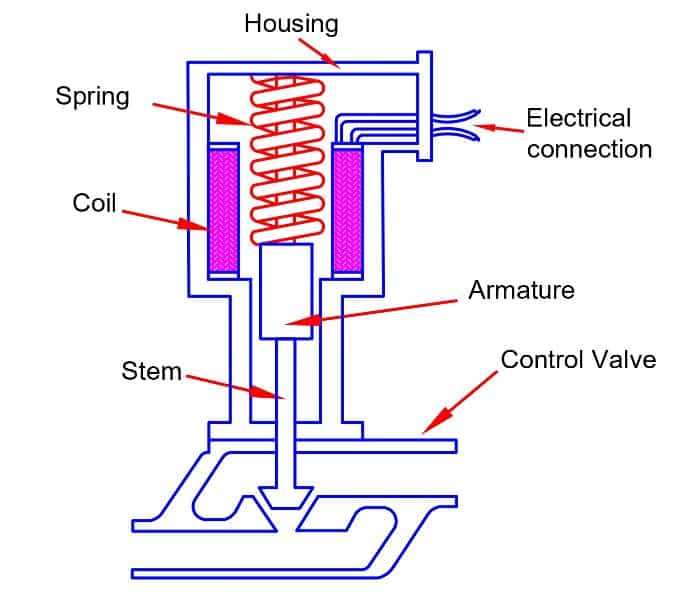An electric solenoid actuator is a type of electromagnetic device. It activates the secondary mechanism that controls the process. Therefore, it is possible to operate these devices from a remote location.
It has only one moving part in it. It is a very simple and reliable device.
Working of an Electric Solenoid Actuator
It generally consists of a static wire-wound coil, armature, spring, and stem.
A typical electric solenoid actuator is shown below in Figure.

The coil of the solenoid valve is connected to the external power supply. The spring completely rests on the armature. The armature moves vertically inside the coil, and it thus transmits its motion through the stem to the valve.
We know when current flows in the coil, the current generates a magnetic field. The magnetic field. The magnetic field pulls the armature towards the center of the coil. The armature thus compresses the spring and the valve opens.
When we interrupt the solenoid coil supply, the magnetic field collapses and the spring starts expanding. As a result of spring expansion, the spring cause armature to push back and the valve closes.
Advantages & Disadvantages of an Electric Solenoid Actuator
Advantages
- Quick Operation
- Easier Installation
Disadvantages
- It has no intermittent position.Therefore, It has two positions: fully open & Fully Closed
- Suitable for small valves because it does not produce much force.